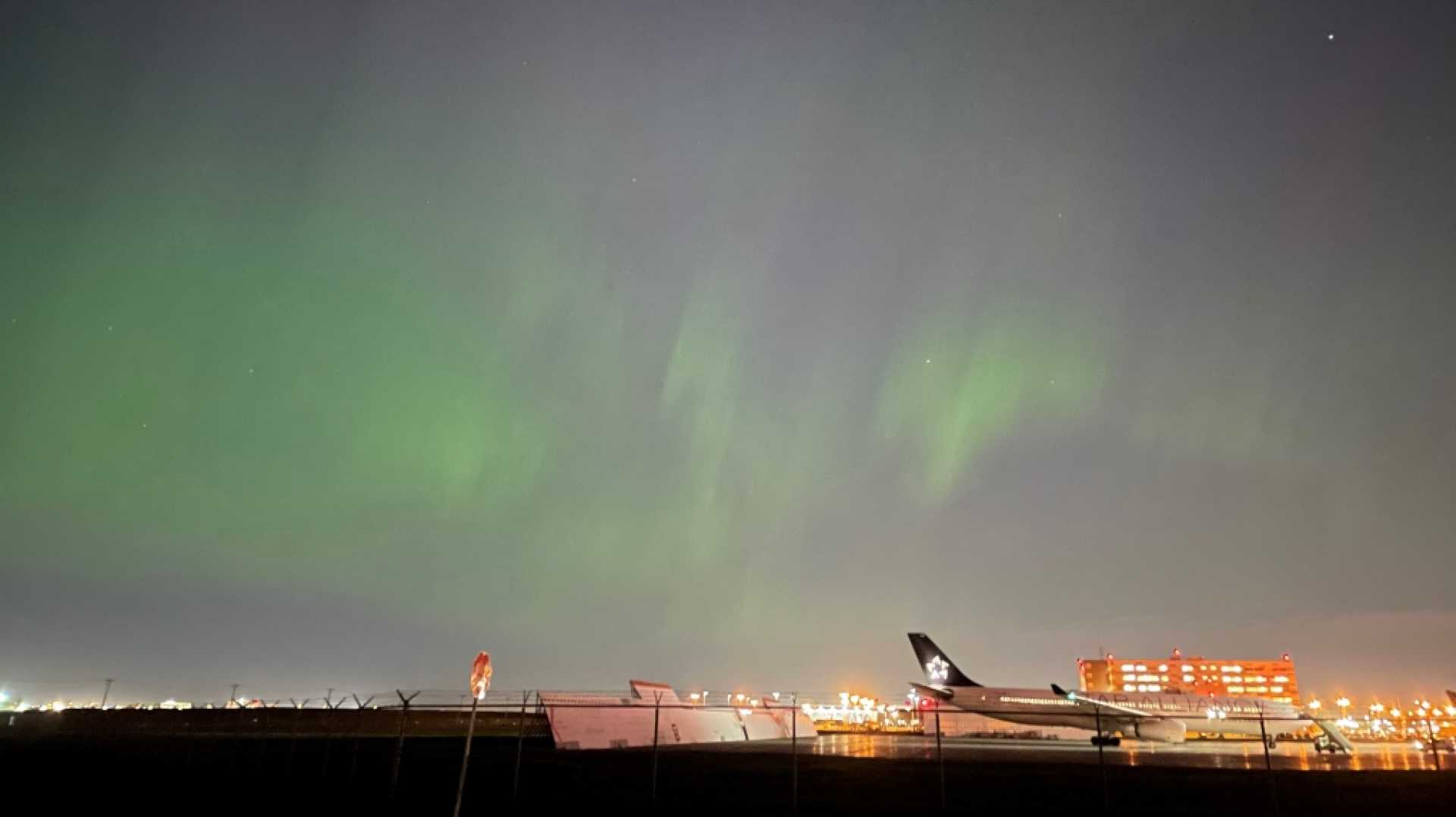World
Intense Northern Lights Expected in Montreal Amid Weather Concerns

Residents of Montreal are advised to keep an eye on the sky this evening as an intense display of the northern lights, similar to the one witnessed on May 10, is anticipated around 8 p.m. However, weather conditions may pose a challenge, with cloud cover potentially obscuring the celestial show.
According to Olivier Hernandez, Director of the Montreal Planetarium, “the optimal window for viewing the northern lights, in terms of space weather, is between 6:30 p.m. and 8 p.m.” He mentioned that there is a 94% probability of seeing the auroras before 8 p.m., which decreases to 63% thereafter due to weather conditions.
Alain Vézina from the Montreal Planetarium’s Astronomy Society added, “It seems there will be a clearing of the sky from 9 p.m. in Montreal, and the chances will still be favorable at that time.”
The U.S. National Oceanic and Atmospheric Administration (NOAA) predicts that the northern lights could be visible as far south as Alabama and northern California. The NOAA has also cautioned about potential impacts on electrical networks, already under strain in the southeastern U.S. due to hurricanes.
Historical precedence for such weather events includes a severe space storm in 1989 that caused a massive power outage in Quebec, though the electrical grids have since been fortified. The strongest modern space storm recorded occurred in 1859, leading to telegraph system failures worldwide.
The visibility of the northern lights is determined by the “Kp” index, ranging from 1 to 9, which forecasts the latitudes where auroras will be visible. A Kp index of 5 makes them visible at Quebec’s latitude, whereas a Kp of 6 extends visibility to the U.S.-Canada border. In urban areas with significant light pollution, a slightly higher Kp index is required. In Montreal, a Kp index between 6 and 7 is necessary, according to Vézina, underlining that tonight’s index is expected to be 8.
Along with the Kp index, two other factors play a role: the direction of the interplanetary magnetic field, represented by a variable called Bz, and the density of solar particles reaching Earth. A negative Bz is essential for solar particles to travel southward. This variable can only be predicted an hour in advance, thanks to an American satellite positioned between Earth and the Sun.
For aurora forecasts, Hernandez prefers the Space Weather Live website, noting its availability in French, over the NOAA site. Vézina recommends using a smartphone camera to detect the auroras, as it is more sensitive than the human eye.
October proves to be a promising month for amateur astronomers, as the comet C/2023 A3 (Tsuchinshan-ATLAS) is expected to be visible from October 12. The frequency of northern lights this year is attributed to the nearing conclusion of the Sun’s 11-year cycle, characterized by increased solar activity.












